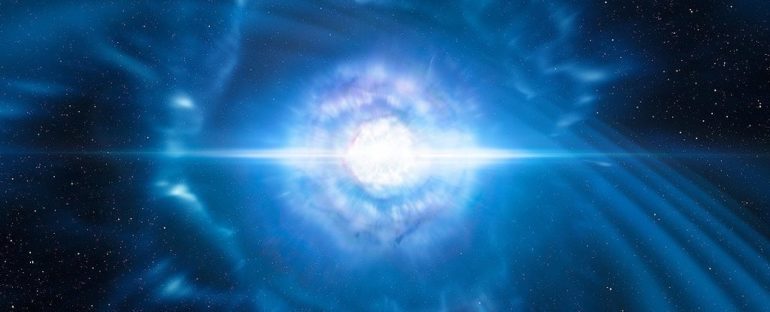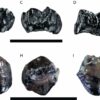It’s now been over three years since history was made with the first-ever detection of colliding neutron stars. From 130 million light-years away, astronomers watched a brilliant flash of gamma-radiation, heralded by rippling gravitational waves, as the two dead stars came together.
Since then, astronomers have been keeping a careful eye on the corner of space in which the collision occurred, to see what happens in the aftermath of such a violent event. And, surprisingly, they found it still continued to glow in the X-ray spectrum long after models predicted such glowing would cease.
“We are entering a new phase in our understanding of neutron stars,” said astronomer Eleonora Troja of the University of Maryland.
“We really don’t know what to expect from this point forward, because all our models were predicting no X-rays and we were surprised to see them 1,000 days after the collision event was detected. It may take years to find out the answer to what is going on, but our research opens the door to many possibilities.”
The collision event, named GW170817, was first detected on 17 August 2017 as gravitational waves emanating from a section of sky in the constellation of Hydra, thanks to the LIGO-Virgo gravitational wave detectors.
Then, just 1.7 seconds later, two space-based observatories, NASA’s Fermi Gamma-ray Space Telescope and ESA’s INTErnational Gamma Ray Astrophysics Laboratory, picked up an intense gamma-ray burst – the brightest and most energetic events in the Universe – from the same area of sky.
Nine days later, astronomers picked up a glow spanning the electromagnetic spectrum from radio waves to X-rays. This was something new, never seen following a gamma-ray burst. Previously, all gamma-ray bursts had completely faded within a few minutes, while this glow defied our understanding of the gamma-ray burst aftermath.
This new afterglow emission was interpreted as the result of a relativistic jet – that is, a jet moving at a significant percentage of the speed of light – from the kilonova explosion. As this jet expands into space, it generates its own shockwave, which emits light across the spectrum, from radio waves to X-rays.
The afterglow continued to grow in brightness, peaking at 160 days and then rapidly fading away – but the X-radiation lingered. It was last detected in March of this year by the Chandra X-ray Observatory, two and a half years after the first detection of the collision; in subsequent observations in May using the Australian Telescope Compact Array, the glow was below the detection threshold.
(E. Troja)
Troja and her team have mapped the X-ray glow, and found that the prolonged emission is still consistent with a relativistic jet, but are not quite sure what enabled it to continue this long after the collision.
Given that GW170817 is the first event of its kind that we’ve been able to observe, it’s likely there are things we don’t understand about how gamma-ray bursts and neutron star collisions happen.
“Having a collision so close to us that it’s visible opens a window into the whole process that we rarely have access to,” Troja said. “It may be there are physical processes we have not included in our models because they’re not relevant in the earlier stages that we are more familiar with, when the jets form.”
It’s also possible that it’s not the jet itself that caused the extended emission, but an expanding cloud of gas from the kilonova that followed behind it, creating its own shockwave. If multiple shockwaves take place at different times and behave differently, that could explain the differences in how the different wavelengths faded.
Or the X-rays could have been prolonged by what the researchers called “continued energy injection by a long-lived central engine” – that whatever was left behind by the collision continued to emit X-radiation.
We don’t currently have enough data to work out which of these scenarios caused the continued glow, but some things are clear. Firstly, we don’t fully understand neutron star mergers. Something is missing from our models, and only continued observations and analysis will help figure out what that is.
Secondly, since this glow has only been identified in relation to a neutron star collision, it could be a signature we can use to identify other neutron star collisions that we may have missed. It’s characteristics could be used to look for similar emission in X-ray data archives to uncover these missed events.
More observations of the GW170817 patch of sky will commence in December of this year, and astronomers are not sure what they are going to find. Either way, it will help constrain our understanding of the event.
“This may be the last breath of an historical source or the beginning of a new story, in which the signal brightens up again in the future and may remain visible for decades or even centuries,” Troja said. “Whatever happens, this event is changing what we know about neutron star mergers and rewriting our models.”
The research is due to appear in the Monthly Notices of the Royal Astronomical Society, and is available on arXiv.



